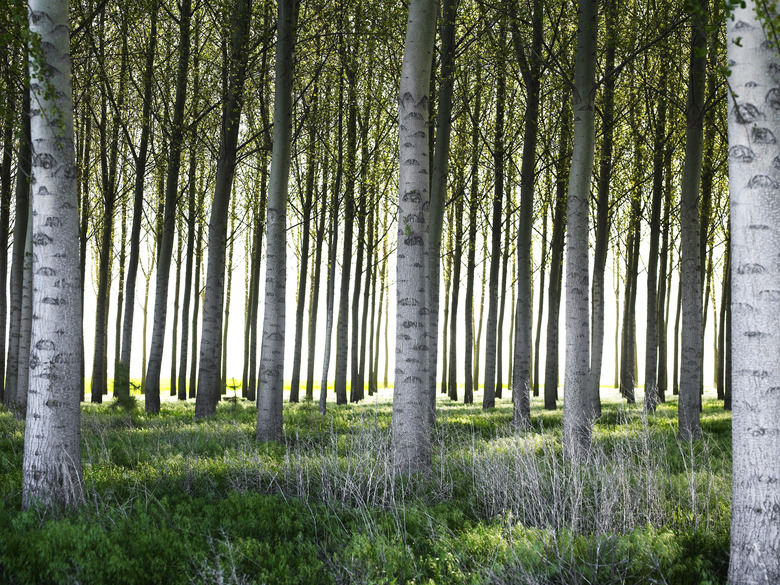Poplar Tree Identification
The strong, narrow, tall poplar tree always stands out in a park. However, identifying the exact type of poplar can be difficult because there are so many members of Populus genus. Looking at a poplar tree leaf is the first step toward correct identification, but the bark of the tree also provides clues.
Types of Poplar Trees
Types of Poplar Trees
The fast-growing poplar tree is the largest hardwood tree in the United States and has a soft, porous wood. The Populus genus includes the balsam poplar (Populus balsamifera), aspen or the white poplar (Populus alba), the gray poplar (Populus canescens), the black poplar (Populus nigra) and the cottonwood (Populus deltoides). Of these, only the balsam poplar and the cottonwood are native to the United States (the eastern and northern areas of the United States, and North America, respectively). The white poplar is a native of Spain and Morocco, the gray poplar is native to Europe (but has been introduced and naturalized everywhere, including the United States) and the black poplar is also native to Europe.
Poplar Tree Leaf Features
Poplar Tree Leaf Features
Each type of poplar tree has distinctive leaves. The balsam poplar tree has egg-shaped, thick leaves with pointed tips and finely toothed edges, which are dark green on the top and pale green underneath. White poplar tree leaves are either oval or five-lobed with wavy edges and a textured white underside. The gray poplar tree has roundish, irregularly toothed, triangular-shaped leaves with coarse margins and a grayish underside. Black poplar tree leaves, which are alternate and rounded with blunt teeth, are dark green on the top and paler underneath. Cottonwood leaves, which are triangular and broad-based with coarse, curved edges and a flat stem, are dark green in summer and yellow in fall. Poplar tree leaves move in even the slightest of breezes, so you may hear a poplar tree before you see it.
Poplar Tree Identification
Poplar Tree Identification
Leaves aside, poplar tree bark may provide some clues to its identity. For example, the white poplar tree has grayish-white diamond-shaped marks on its bark as a young tree. These turn black as the tree ages. The black poplar tree has a dark grayish-brown bark and clusters of upright branches. A young balsam poplar tree has a greenish to reddish-brown bark, which turns gray as it ages. Also, if you notice a sweet fragrance from a poplar tree's opening buds, it is likely to be a balsam poplar.
Cite This Article
MLA
Gillespie, Claire. "Poplar Tree Identification" sciencing.com, https://www.sciencing.com/poplar-tree-identification-5257540/. 22 November 2019.
APA
Gillespie, Claire. (2019, November 22). Poplar Tree Identification. sciencing.com. Retrieved from https://www.sciencing.com/poplar-tree-identification-5257540/
Chicago
Gillespie, Claire. Poplar Tree Identification last modified March 24, 2022. https://www.sciencing.com/poplar-tree-identification-5257540/
